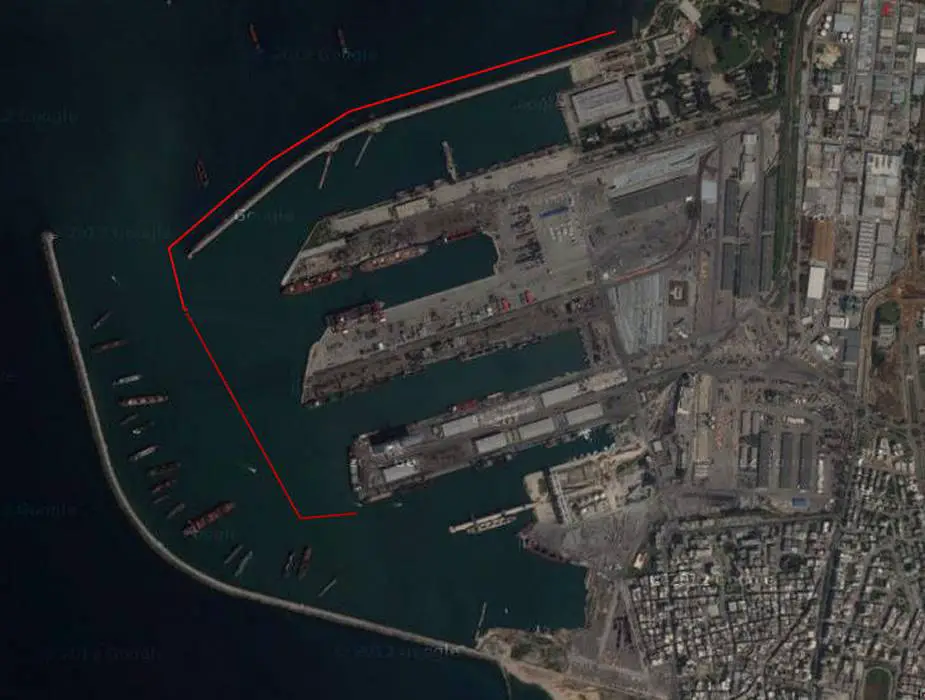Breaking news
Russia gets naval base in Sudan.
Russia received the right to deploy a material and technical logistical Navy base in the Sudan. It means the Russian Navy is returning to the Indian Ocean, the Izvestia daily writes.
Follow Navy Recognition on Google News at this link

Russian military facility in Tartus, Syria (Picture source: MEMIM)
The base in Port Sudan is important for Moscow. The northwestern Indian Ocean developed into a major hydrocarbon production center in the 20th century and oil is delivered to America and Europe there. Any instability in the area triggers price hikes and impacts the world economy.
The Russian Navy was late to come to the Indian Ocean and all bases were already occupied by European nations. Semi-official and nonofficial attempts to get a stronghold in Africa failed. Russia was late to join the colonial race and did not want to spoil relations with the UK and France. The situation changed after World War Two. Admirals Kuznetsov and Gorshkov developed the Soviet Union into a sea power with interests in the Indian Ocean. The Soviet flag in the region was represented by the 8th squadron which countered the 7th US fleet in Cold War time.
It was difficult for Soviet navymen to operate in the region because of the different climate and tensions. The region constantly balanced on the brink of a conflict. The Soviet Union had to abandon the base in Somalia after a conflict emerged with Ethiopia and Moscow sided with it. A new base was deployed in Nokra Island in Dahlak Archipelago.
Soviet warships could call at friendly ports from Seychelles to Sokotra in Yemen, but Moscow staked on supply vessels, tankers, floating workshops and bases to obtain the required flexibility and operate without nearby naval bases. In contrast to the Atlantic and the Pacific Oceans, the Indian Ocean did not develop into a Cold War frontline. Soviet and US warships were engaged in the same mission to ensure free navigation and fight sea pirates.
The Soviet collapse decreased the capabilities of the Navy. The period lasted nearly two decades, which was sufficient to make the return of the blue-water fleet a difficult task.
In Soviet time, the Pacific fleet operated in the Indian Ocean. Now the Black Sea fleet is present there. Port Sudan therefore looks logical after Tartus naval base in Syria. It controls navigation in the Red Sea and can protect ships from sea pirates. There is a good bay with a relatively developed infrastructure. The absence of problems with the national leadership gives grounds to hope it would not be necessary to urgently redeploy the base. The construction of an oil refinery in Port Sudan in which Russian business plans to invest also adds confidence.
“The typical peacetime strength of such a base comprises a floating workshop, a rescue tug, 3-4 small warships,” expert Ilya Kramnik said. “However, the key force there would comprise intelligence and commandos, as the region mostly needs special rather than military instruments. If the latter are necessary, big warships — nuclear submarines and nuclear cruisers would be sent. Russia has agreed that nuclear-powered ships would call, but they will not be permanently deployed there,” he said.
The key question are the plans of Moscow. Will Port Sudan remain the southern stronghold of Russian presence in the Middle East or will it be the first step towards a full Russian return to the Indian Ocean? the Izvestia asked.
© Copyright 2020 TASS Navy Recognition. All rights reserved. This material may not be published, broadcast, rewritten or redistributed.



























